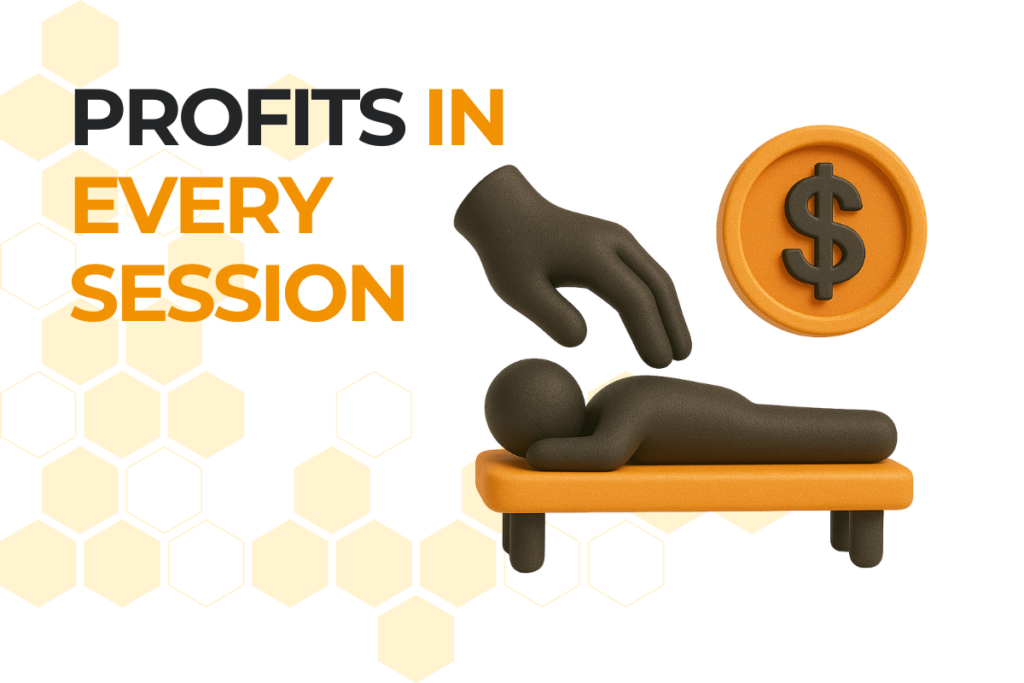Breaking Free from Financial Instability
Financial instability in a massage clinic is a critical challenge that can jeopardize long-term success if left unaddressed. From fluctuating client bookings and seasonal slowdowns to rising overhead costs, many clinic owners struggle to maintain a consistent income. Without proactive financial strategies, cash flow disruptions can make it difficult to cover rent, pay staff, replenish supplies, and reinvest in business growth. Additionally, unexpected expenses—such as equipment repairs or regulatory fees—can further strain finances, creating uncertainty and stress.
To build a financially resilient massage clinic, owners must take a strategic, multi-faceted approach that includes optimizing pricing, stabilizing revenue streams, reducing operational inefficiencies, and leveraging smart financial planning. This guide provides practical, actionable steps to help you navigate financial challenges, boost profitability, and create a stable, sustainable massage therapy business that thrives in any economic climate.
Identifying the Root Causes of Financial Instability
Inconsistent Client Flow and Seasonal Variations
Every massage clinic experiences fluctuations in client demand. Seasonal trends, holidays, and unpredictable booking patterns can make income unpredictable. Additionally, last-minute cancellations and no-shows create further disruptions. Without strategies to ensure a steady stream of clients, maintaining a stable revenue becomes challenging. Financial instability in a massage clinic is often caused by these unpredictable changes.
Pricing Pitfalls and Revenue Leakage
One of the biggest mistakes clinic owners make is undervaluing their services. Charging too little or relying on frequent discounts can undermine profitability. Many therapists also struggle to raise prices, fearing client pushback. However, without proper pricing adjustments, clinics fail to cover operational costs and earn a sustainable income. Financial instability in a massage clinic can worsen if pricing strategies do not align with business expenses.
High Overhead Costs and Unmanaged Expenses
Rent, utilities, payroll, and supply costs can quickly erode profit margins. Many clinic owners underestimate their expenses or fail to track them efficiently, leading to financial strain. Without cost-control measures, even a steady flow of clients may not be enough to sustain the business. Reducing financial instability in a massage clinic requires better expense tracking and strategic cost-cutting.
Weak Financial Planning and Cash Flow Management
Without a structured budget or clear financial goals, many clinic owners operate in a reactive mode, making short-term decisions that impact long-term stability. Understanding key financial metrics—such as profit margins, treatment costs, and break-even points—is crucial for making informed business decisions. Financial instability in a massage clinic can be avoided with proactive financial planning.
Overreliance on a Small Client Base
Some clinics depend too heavily on a handful of loyal clients. If these clients stop booking or reduce their frequency, revenue takes an immediate hit. A diversified client base is essential for long-term sustainability. Addressing financial instability in a massage clinic means building a broader, more reliable client network.

Strategies to Stabilize and Strengthen Financial Health
Improving Client Retention and Reducing No-Shows
A consistent client base is key to financial stability. Implement these strategies:
- Automated appointment reminders: Reduce cancellations with text or email notifications.
- Membership or package deals: Encourage long-term commitments with prepaid sessions.
- Personalized follow-ups: Checking in with clients after their session improves retention rates.
Optimizing Pricing for Profitability
If your pricing doesn’t reflect the value of your services, you’re leaving money on the table. Adjusting rates effectively requires:
- Market research: Compare rates in your area while considering your expertise and offerings.
- Tiered pricing models: Offer different service levels at varied price points.
- Value-based pricing: Highlight additional benefits like specialized techniques or extended session times.
Cutting Overhead Without Sacrificing Quality
Lowering costs without reducing service quality is crucial for profitability:
- Negotiate rental agreements: If your lease is up for renewal, discuss better terms.
- Bulk purchase supplies: Buying in larger quantities reduces per-unit costs.
- Streamline operations: Utilize automated scheduling and digital record-keeping to reduce administrative expenses.
Diversifying Revenue Streams for Stability
Expanding Service Offerings
Adding complementary services can increase revenue per client. Consider:
- Hot stone or aromatherapy add-ons
- Stretch therapy or movement coaching
- Specialized treatments like sports massage or prenatal care
Introducing Retail Products
Retail sales provide passive income while enhancing client care. Stock high-quality items such as:
- Essential oils
- Foam rollers and massage tools
- Skincare or wellness products
Implementing Membership Programs
A subscription-based model guarantees steady income. Offer:
- Monthly memberships with discounted sessions
- VIP client perks like priority booking
- Exclusive content, such as self-care tips and guided wellness plans
Leveraging Marketing and Technology for Growth
Strengthening Your Online Presence
A well-optimized online presence helps attract new clients. Key tactics include:
- SEO-optimized website content: Ensure your site ranks for local searches.
- Active social media engagement: Share testimonials, educational content, and promotions.
- Google My Business optimization: Keep your listing updated with accurate contact details, images, and reviews.
Using Automation to Improve Cash Flow
Technology streamlines operations and reduces financial risks:
- Online booking software: Reduces scheduling errors and increases client convenience.
- Automated invoicing and payments: Ensures on-time payments and reduces administrative burden.
- Data-driven decision-making: Track financial trends and client retention rates for strategic planning.

Seeking Professional Financial Guidance
Consulting with Financial Experts
Working with an accountant or financial advisor can help you:
- Optimize tax planning to avoid unexpected liabilities
- Create a budget tailored to business growth
- Identify financial red flags before they become serious issues
Continuous Financial Education
Business success requires ongoing learning. Invest in:
- Workshops on pricing strategies and financial management
- Online courses on cash flow and profitability
- Networking with other clinic owners to share best practices
Building a Financially Resilient Massage Therapy Clinic
Achieving financial stability in a massage clinic requires a proactive and strategic approach. It’s not just about cutting costs or increasing prices—it’s about building a well-rounded, resilient business model that supports consistent revenue growth while maintaining high-quality client care. By optimizing your pricing structure, you can ensure that your rates reflect the true value of your services without undercutting your profitability. Diversifying revenue streams—such as offering retail products, implementing membership programs, or adding complementary wellness services—helps reduce dependency on individual sessions and creates multiple income channels that keep your clinic financially secure.
Additionally, leveraging technology can streamline operations, from automated appointment scheduling and client follow-ups to financial tracking that provides real-time insights into cash flow and profitability. Implementing the right tools can save time, reduce administrative costs, and improve client retention. Seeking expert financial guidance, whether through consulting with an accountant, attending business workshops, or networking with other successful clinic owners, provides valuable insights into best practices that can help safeguard and scale your business.
By taking these deliberate and informed steps, you can build a strong financial foundation, minimize risks, and create a sustainable, thriving massage therapy business that not only survives but flourishes in the long run.
FAQs
Review pricing annually, factoring in operational costs, market demand, and value-added services. Small, incremental increases are better received than sudden large hikes.
Implement a clear cancellation policy, require deposits for high-demand appointment slots, and send automated reminders to reduce missed bookings.
Offer loyalty programs, follow up with clients after sessions, and personalize their experience by remembering preferences and treatment history.
Yes. Automated booking and financial tracking software reduces administrative work, improves accuracy, and helps streamline business operations.


